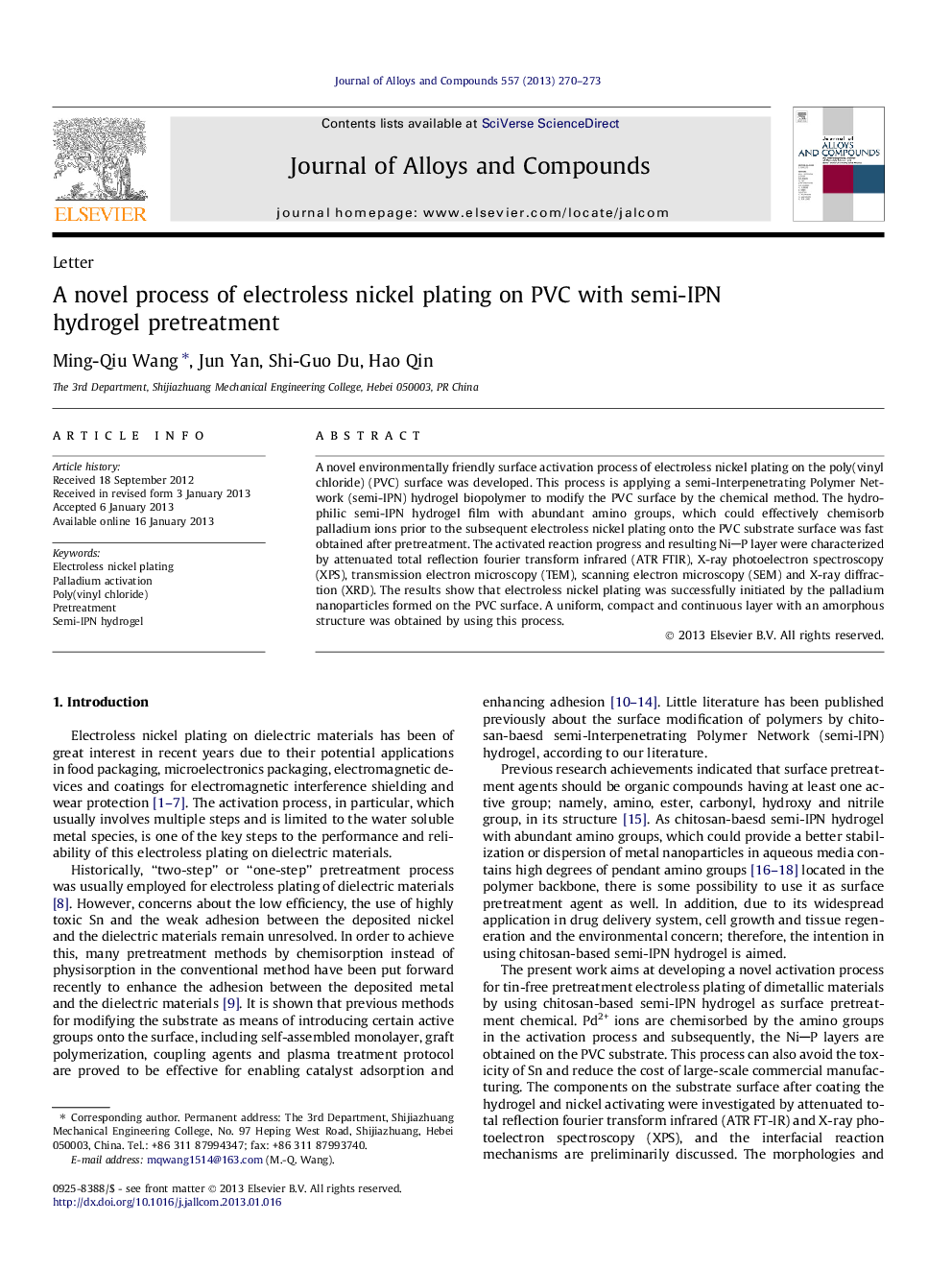| Article ID | Journal | Published Year | Pages | File Type |
|---|---|---|---|---|
| 1614577 | Journal of Alloys and Compounds | 2013 | 4 Pages |
A novel environmentally friendly surface activation process of electroless nickel plating on the poly(vinyl chloride) (PVC) surface was developed. This process is applying a semi-Interpenetrating Polymer Network (semi-IPN) hydrogel biopolymer to modify the PVC surface by the chemical method. The hydrophilic semi-IPN hydrogel film with abundant amino groups, which could effectively chemisorb palladium ions prior to the subsequent electroless nickel plating onto the PVC substrate surface was fast obtained after pretreatment. The activated reaction progress and resulting NiP layer were characterized by attenuated total reflection fourier transform infrared (ATR FTIR), X-ray photoelectron spectroscopy (XPS), transmission electron microscopy (TEM), scanning electron microscopy (SEM) and X-ray diffraction (XRD). The results show that electroless nickel plating was successfully initiated by the palladium nanoparticles formed on the PVC surface. A uniform, compact and continuous layer with an amorphous structure was obtained by using this process.
► A novel tin-free process for electroless nickel plating on PVC was developed. ► A chitosan-based semi-IPN hydrogel was used to modify the PVC surface. ► The semi-IPN hydrogel film fixed the Pd0 nanoparticles through N–Pd0 chemical bonds. ► Pd0 nanoparticles of 5–10 nm in size initiated the subsequent electroless plating. ► An amorphous Ni–P layer with no evident surface cracks was obtained.
